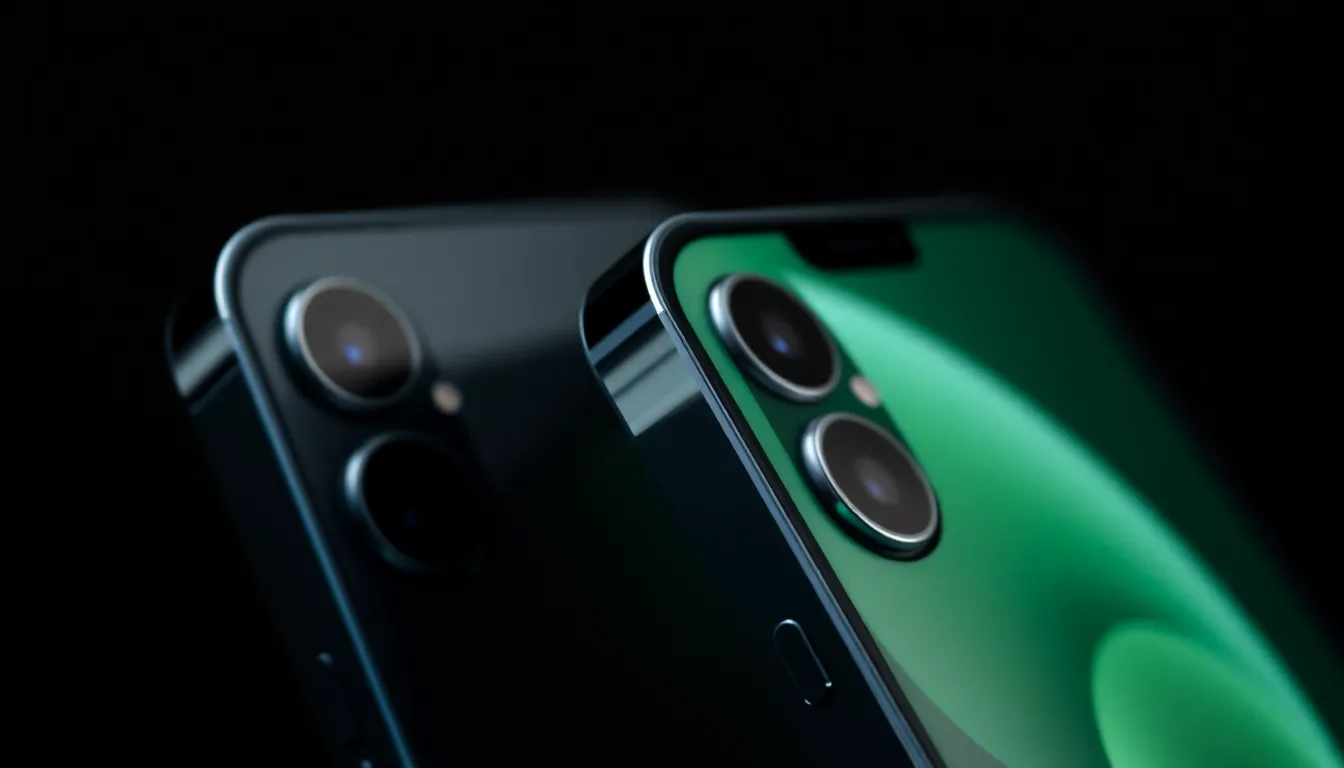When it comes to smartphones, size does matter—especially when comparing the iPhone 12 Pro Max and the 13 Pro Max. These two titans from Apple may seem like twins at first glance, but do they share the same dimensions? Spoiler alert: they don’t.
While both models flaunt their sleek designs and premium features, a closer look reveals subtle differences that could make or break your phone experience. Whether you’re a die-hard Apple fan or just looking to upgrade, understanding these size distinctions could save you from some awkward moments at the phone case store. So, let’s dive into the nitty-gritty and find out if these two models are truly cut from the same cloth—or if one’s been hitting the gym while the other’s been binge-watching Netflix.
Overview of iPhone 12 Pro Max and 13 Pro Max
iPhone 12 Pro Max and iPhone 13 Pro Max appear similar at first glance, but their specifications reflect key differences. Both devices feature Super Retina XDR displays, measuring 6.7 inches diagonally. They vary slightly in weight; the 12 Pro Max weighs 228 grams, while the 13 Pro Max weighs 238 grams. Dimensions also diverge: the 12 Pro Max measures 160.8 x 78.1 x 7.4 mm, contrasting with the 13 Pro Max’s dimensions of 160.8 x 78.1 x 7.65 mm.
Changes in internal components contribute to performance differences. The 13 Pro Max includes the A15 Bionic chip, enhancing processing speed and power efficiency. Comparatively, the 12 Pro Max utilizes the A14 Bionic chip. Battery life sees improvements as well; the 13 Pro Max supports up to 28 hours of talk time, while the 12 Pro Max offers up to 20 hours.
Camera capabilities showcase further differences. Both models have a triple-camera setup, yet the 13 Pro Max introduces advanced photographic features, such as Cinematic mode for video recording. Users will notice improved low-light performance with the newer model’s sensor technology.
When considering accessory compatibility, potential buyers should recognize that specific cases designed for the 12 Pro Max may not fit the 13 Pro Max perfectly. Overall, while both models provide high-end features, specific distinctions may influence purchasing decisions.
Design Specifications

Understanding the design specifications helps reveal key differences between the iPhone 12 Pro Max and iPhone 13 Pro Max.
Dimensions Comparison
Both models feature a 6.7-inch Super Retina XDR display. The iPhone 12 Pro Max measures 160.8 x 78.1 x 7.4 mm, while the iPhone 13 Pro Max measures 160.8 x 78.1 x 7.65 mm. Despite having the same width and height, the iPhone 13 Pro Max is thicker, resulting in a slightly different fit for cases. Knowing these precise measurements matters for users selecting accessories. For those who prioritize seamless fit, these small variations can influence the choice of cases.
Weight Differences
Weight plays a significant role in user experience for mobile devices. The iPhone 12 Pro Max weighs 228 grams, whereas the iPhone 13 Pro Max weighs 238 grams. This difference of 10 grams may seem minimal, but it can affect comfort during prolonged use. Lighter devices generally enhance portability, making the iPhone 12 Pro Max more appealing for users who prefer a lighter feel. In contrast, those who opt for the iPhone 13 Pro Max enjoy improved features, justifying the additional weight.
Display Features
The iPhone 12 Pro Max and 13 Pro Max share notable display characteristics that enhance the user experience. Both devices feature a 6.7-inch Super Retina XDR display, delivering vibrant colors and stunning clarity, making them ideal for multimedia consumption.
Screen Size Similarities
Screen size alignment between the iPhone 12 Pro Max and 13 Pro Max remains consistent with the 6.7-inch measurement. This uniformity allows users to enjoy the same expansive viewing area for videos, games, and web browsing. Users can expect no difference in diagonal measurement, ensuring that app layouts and interfaces display similarly across these models.
Resolution and Pixel Density
Resolution consistency is another key feature, with both models boasting a resolution of 2778 x 1284 pixels. This translates to a pixel density of approximately 458 pixels per inch. Users experience sharp images and crisp text, enhancing overall readability and visual appeal. Such outstanding resolution supports immersive experiences, appealing to those who prioritize high-quality displays in their smartphones.
Performance and Build Quality
The iPhone 12 Pro Max and iPhone 13 Pro Max exhibit noteworthy differences in performance and build quality. Understanding these differences assists users in making an informed choice between the two.
Material Used
Apple employs premium materials for both models. Stainless steel frames enhance the 12 Pro Max’s durability. The 13 Pro Max features the same stainless steel but improves on glass quality with Ceramic Shield, providing superior scratch resistance. Both devices are water-resistant with an IP68 rating, allowing submersion in water up to 6 meters for 30 minutes. Users can expect elegance and sturdiness from both devices, making them attractive options for those seeking quality.
Durability Factors
Durability plays a critical role in the usability of the iPhone 12 Pro Max and iPhone 13 Pro Max. The 13 Pro Max, with its Ceramic Shield front cover, offers better drop protection compared to the 12 Pro Max’s glass. Both models showcase the robust build typical of Apple’s design philosophy. Real-world tests demonstrate that the enhancements in the 13 Pro Max result in improved resistance to everyday wear and tear. Regular usage experiences indicate that these durability factors significantly contribute to overall satisfaction with the devices.
The iPhone 12 Pro Max and iPhone 13 Pro Max may look similar at first glance but their size differences are crucial for users. With slight variations in weight and dimensions the choice of phone case becomes significant. Those considering a purchase should weigh the benefits of the enhanced features in the 13 Pro Max against the lighter feel of the 12 Pro Max. Understanding these distinctions not only aids in selecting the right accessories but also impacts overall user experience. Ultimately both models offer impressive performance and durability making either a solid choice depending on individual preferences.
